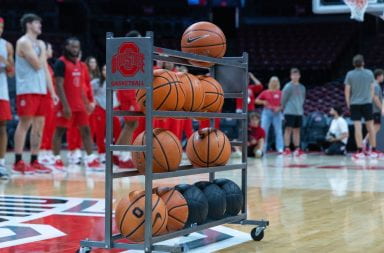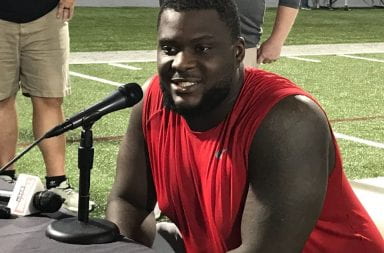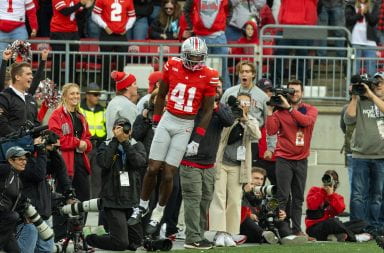![In a landmark case, the NCAA reached a multi-billion-dollar settlement that will allow schools to directly pay players for the first time in collegiate athletics history. Credit: Christian Petersen/Getty Images via TNS. [Original Caption: The NCAA logo is seen in the second half of the game between the Northwestern Wildcats and the Vanderbilt Commodores during the first round of the 2017 NCAA Men's Basketball Tournament at Vivint Smart Home Arena on March 16, 2017 in Salt Lake City, Utah.]](https://www.thelantern.com/files/2024/05/OPED-GRANDERSON-COLUMN-GET-1.jpg)
In a landmark case, the NCAA reached a multi-billion-dollar settlement that will allow schools to directly pay players for the first time in collegiate athletics history. Credit: Christian Petersen/Getty Images via TNS. [Original Caption: The NCAA logo is seen in the second half of the game between the Northwestern Wildcats and the Vanderbilt Commodores during the first round of the 2017 NCAA Men’s Basketball Tournament at Vivint Smart Home Arena on March 16, 2017 in Salt Lake City, Utah.]
NCAA’s Big Ten, Southeastern, Pac-12, Atlantic Coast and Big 12 conferences announced the settlement Thursday night.
“The five autonomy conferences and the NCAA agreeing to settlement terms is an important step in the continuing reform of college sports that will provide benefits to student-athletes and provide clarity in college athletics across all divisions for years to come,” said NCAA President Charlie Baker and the five power conferences in a joint statement.
The settlement is reported to be upwards of $2.77 billion in damages to past and current collegiate athletes over a 10-year period. According to multiple reports, the agreement aims to settle a trio of federal antitrust cases from student-athletes.
“We were in support of the settlement agreement. We do not have any additional comment at this time aside from the NCAA and autonomy conference’s joint statement last evening,” Ohio State Associate Athletic Director of Communications Jerry Emig said in an email Friday.
According to ESPN, the NCAA and the five power conferences also agreed to a revenue-sharing plan that will allow each university within the participating conferences to share up to roughly $20 million per year with its athletes.
To account for discrepancies in revenues among the top schools in the power conferences, the settlement states universities will pay 22% of the average annual athletic department revenue among schools in these conferences, according to CBS Sports.
According to ESPN, all Division I athletes since 2016 are eligible to receive a share as part of the settlement and, in exchange, athletes are unable to sue the NCAA for other antitrust violations and also must drop their complaints against the NCAA in House v. NCAA, Hubbard v. NCAA and Carter v. NCAA.
According to multiple reports, the lawsuit — which was filed by former Arizona State University swimmer Grant House and TCU women’s basketball player Sedona Prince — centered its efforts around the eight-year, $8.8 billion extension the NCAA signed to gain broadcasting rights to the March Madness basketball tournament. They looked to seek previous damages for payments the lawsuit deems the NCAA withheld, and named the five power conferences and the NCAA as co-defendants in the suit.


